The NTSB didn’t just recover the black boxes of the TransAir 737 that ditched off Hawaii last summer, they brought up the entire wreckage.
This operation relates to the ditching of TransAir flight 810, off the south coast of Oahu island, in Hawaii. This happened on the 2nd of July this year. It was a cargo flight, with only the two pilots on board. It appears that the crew struggled to get power out of one, then both engines. They eventually had to ditch in the ocean. But this was in the dark, after midnight, and in swelling seas. So their aircraft broke upon impact with the water.
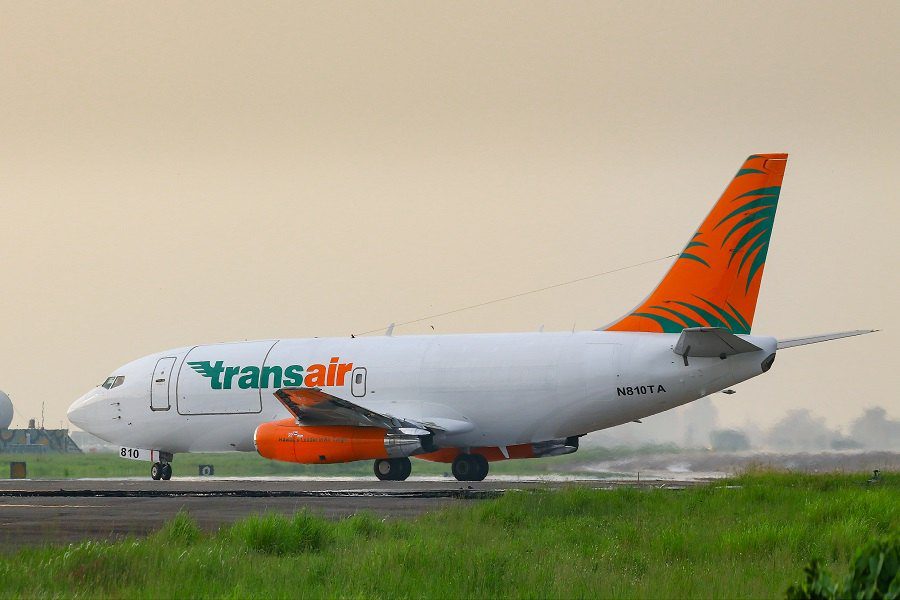
Fortunately, both TransAir pilots got out of the wreckage of their 737, getting where rescue crews could reach them. Both of them had serious injuries, keeping them in hospital for several days. But they both survived. The quick arrival of the Coast Guard and other emergency response teams had a vital role in saving both crew members.
The TransAir flight hit the water relatively close to the coast. It finally rested on the seabed approximately 2 miles south of Oahu island. But even at this short distance, the TransAir 737 wreckage was about 350-450 feet (107-137 metres) deep. This is because of the volcanic nature of the Hawaii islands.
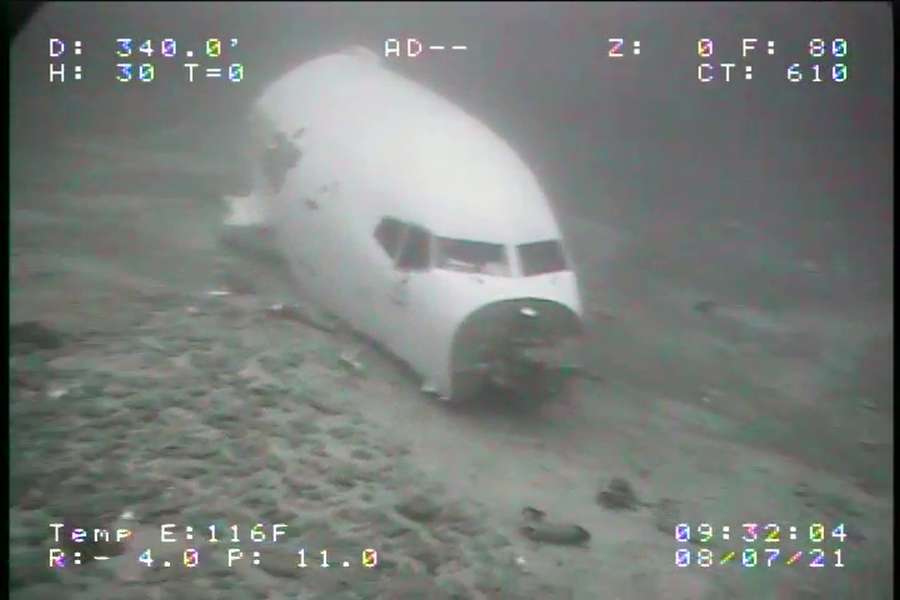
Recovering The TransAir 737 Wreckage
A few days after the ditching, the NTSB used an undersea robotic vehicle, to survey the area around the aircraft. They found the wreckage of the TransAir 737 resting on the seafloor, in a relatively small number of pieces. The agency explains that TransAir’s insurer wanted to recover the aircraft and its cargo. So they contacted a number of companies, with the right equipment to make this happen.
So last month, the NTSB announced that they would be coordinating the recovery efforts of the TransAir 737 wreckage. Previously, the agency wanted to get the cockpit voice recorder (CVR), the Flight Data Recorder (FDR) and the engines. But recovering the CVR and FDR without raising the plane would be challenging since the fuselage was largely intact.
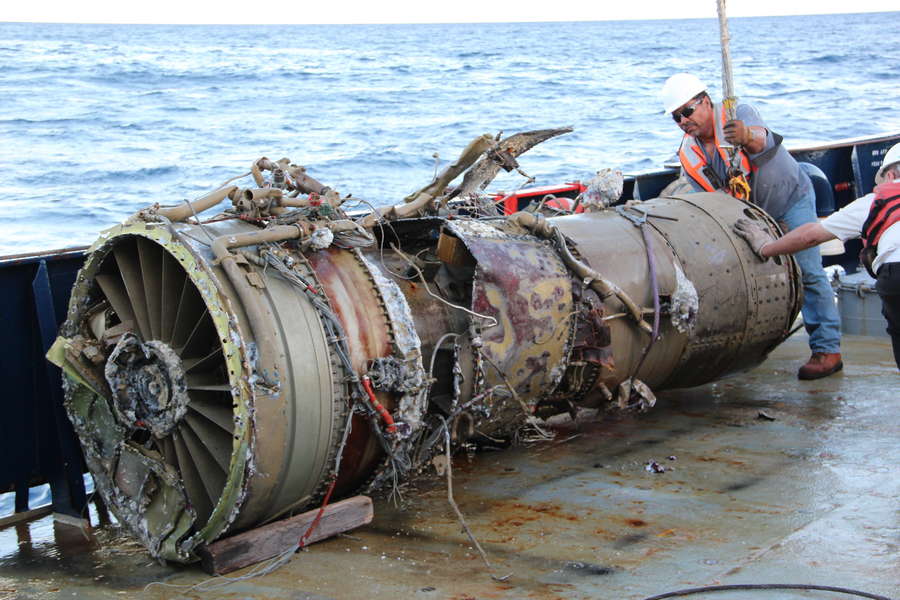
So after months of preparation, the recovery process started on the 12th of October. First to come onshore were the two engines and the nose gear, on the 17th. The next day, saw the start of efforts to recover the fuselage. At “only” 15,500 pounds (7 metric tons), this was the smallest fuselage section of the TransAir 737 wreckage. The team brought it to shore on the 22nd.
The rest of the wreckage consisted of the rear fuselage, the wings AND most of the TransAir cargo, still on board the 737. The aircraft section weighed 48,500 pounds (22t), or 60,500 pounds (27.4t) with its four cargo containers. Rigging all of these components using remote vehicles is challenging enough. But this section was the hardest not only because of its size and weight but also because of its condition.

The Investigation Continues
Boeing engineers were on hand, to ensure that all parts of the TransAir 737 wreckage would stay in one piece (each), during the operation. The rear fuselage section, complete with the CVR and FDR, made it to the shore on the 31st of October. Along the process, the recovery team also brought on the surface some smaller pieces of the aircraft. They also recovered two other cargo containers.
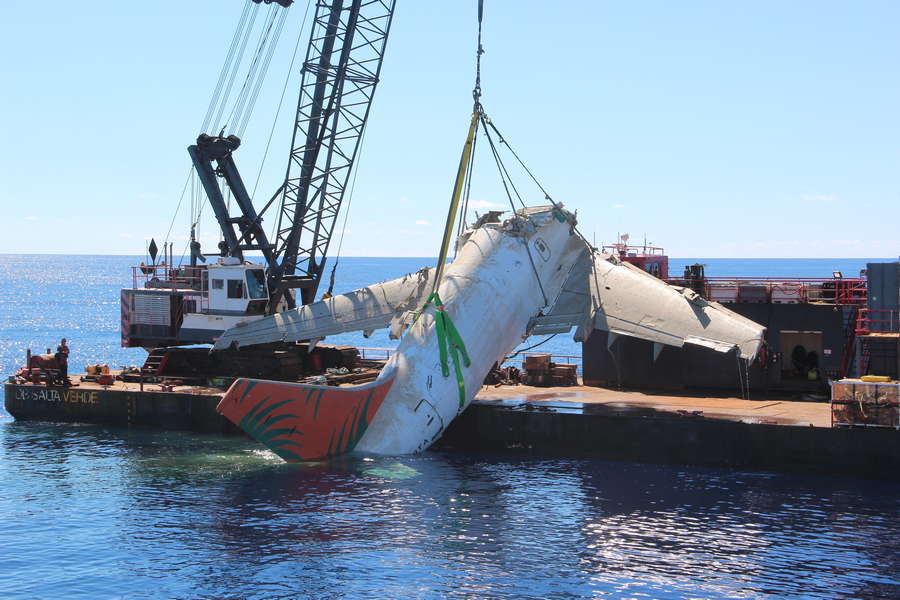
NTSB Chair Jennifer L. Homendy said this about the recovery efforts for the TransAir 737 wreckage:
“The recovery of the recorders and virtually the entire airplane represents a major step forward in the investigation. We are so appreciative of the collaborative efforts of the federal and state agencies, parties and contractors that contributed to this successful outcome.”
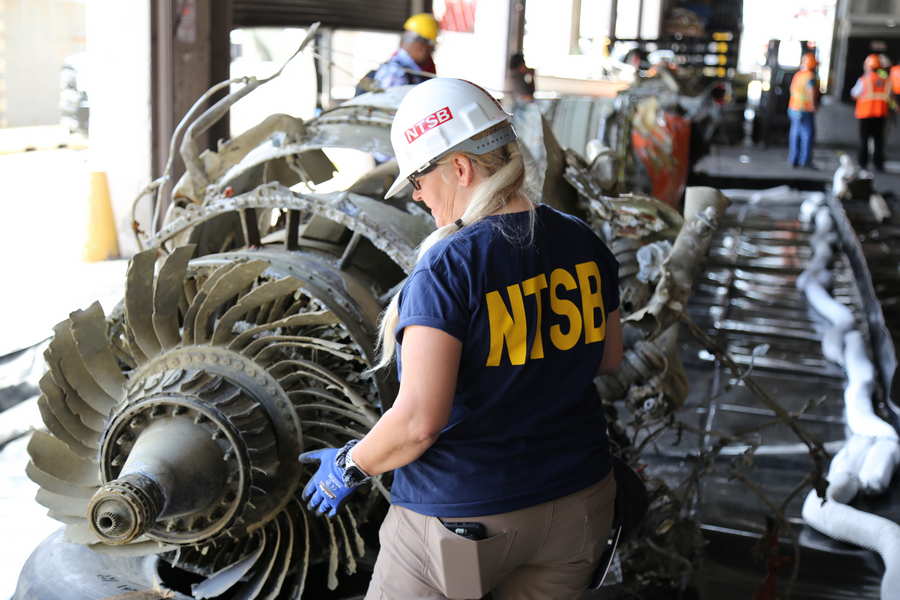
Most of the TransAir 737 wreckage will remain in Hawaii. Investigators are transporting the engines and other key components to the mainland. The CVR and FDR are already on their way to Washington DC. There, they will soon start answering many questions about this accident.
This event may have involved a very old aircraft, but authorities still want to get to the bottom of its causes. There is also some mystery around the company itself. Even before the crash, the FAA was in the process of grounding the airline’s operations, because of maintenance concerns.



